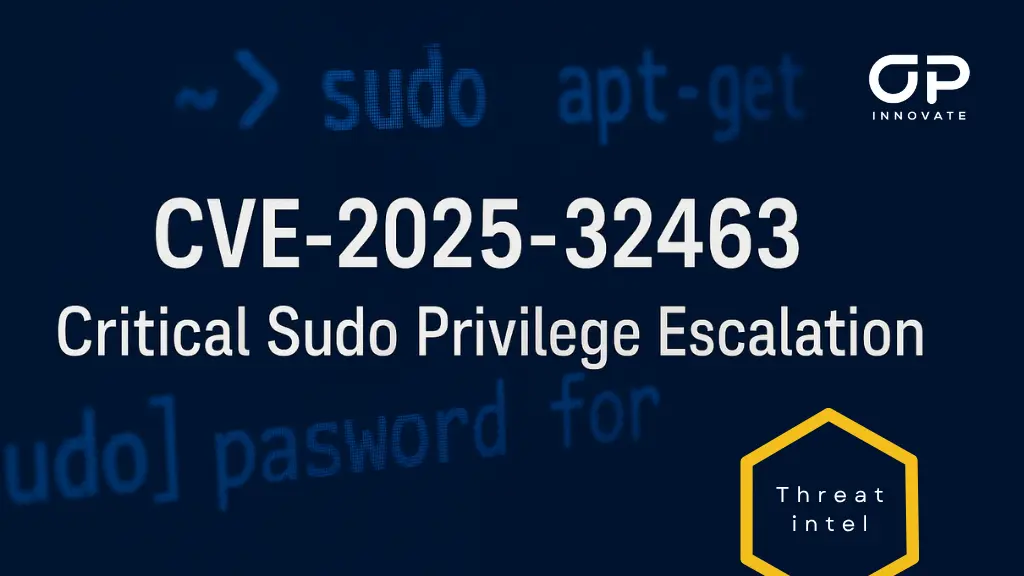CVE-2025-32463 is a critical local privilege escalation in the ubiquitous sudo utility. The bug allows a local user to escalate to root by abusing sudo’s –chroot (-R) behavior, which ends up honoring configuration files inside a user-controlled chroot (notably etc/nsswitch.conf).
Because the vulnerable behavior exists in default builds, the issue is exploitable on otherwise unmodified systems. CISA has added the vulnerability to its KEV catalog after observing exploitation in the wild, which elevates the urgency for remediation.
How exploitation plays out
An attacker needs local access to a vulnerable host. On multi-user systems, CI/CD runners, build images or any environment where unprivileged users can create directories, that requirement is straightforward to satisfy.
Once a vulnerable sudo invocation uses -R, an attacker-controlled chroot tree can influence name-service and library resolution and produce a root shell even if the user is not listed in sudoers.
Public proof-of-concept code exists, and defenders should assume opportunistic exploitation is taking place.
Immediate actions (do these now)
- Patch sudo to 1.9.17p1 or later everywhere: servers, workstations, container base images and golden images.
- Inventory: run sudo -V across your environment. Prioritize multi-user and internet-facing hosts.
- If you cannot patch immediately, block or tightly monitor use of sudo –chroot and ensure users cannot write chroot-like trees with system files (e.g., etc/nsswitch.conf).
Detection & short hunts
Look for sudo invocations using -R or –chroot, unexpected creation or modification of */etc/nsswitch.conf in user-writable paths, and sudo spawning interactive shells without corresponding sudoers entries.
Auditd, syslog and EDR command traces are high-value sources. Small, targeted rules for sudo -R will surface most attempts. Because PoCs are public, these indicators are actionable now.
Why this matters
Sudo is the most common escalation gateway on Linux and Unix systems. A trivial local-to-root path drastically shortens attacker kill-chains: initial foothold → sudo LPE → persistence, credential theft, and lateral movement.
The KEV listing also creates compliance pressure and accelerated patch windows for affected U.S. federal agencies, a signal that organizations should treat this as an immediate operational priority.
OP Innovate recommendations
Patch first. Then validate golden images and CI/container templates. Add a short detection play (sudo -R alerts + FIM on etc/nsswitch.conf) and review sudoers for over-permissive rules. If you suspect abuse, bring in incident response to examine timelines, curious sudo calls, and any persistence mechanisms that may have been installed post-escalation.
Stay safe. Stay secure.
OP Innovate Research Team



